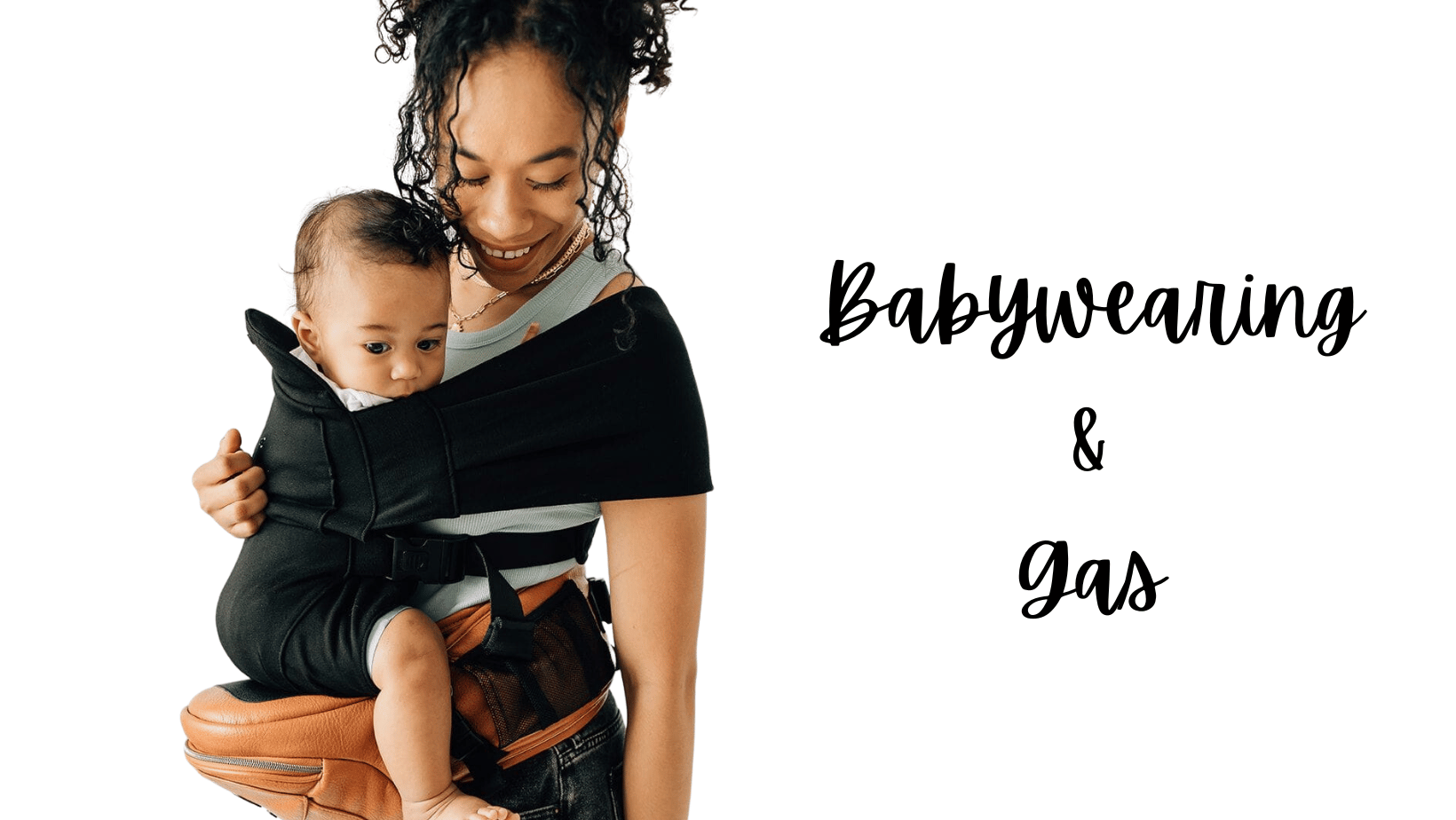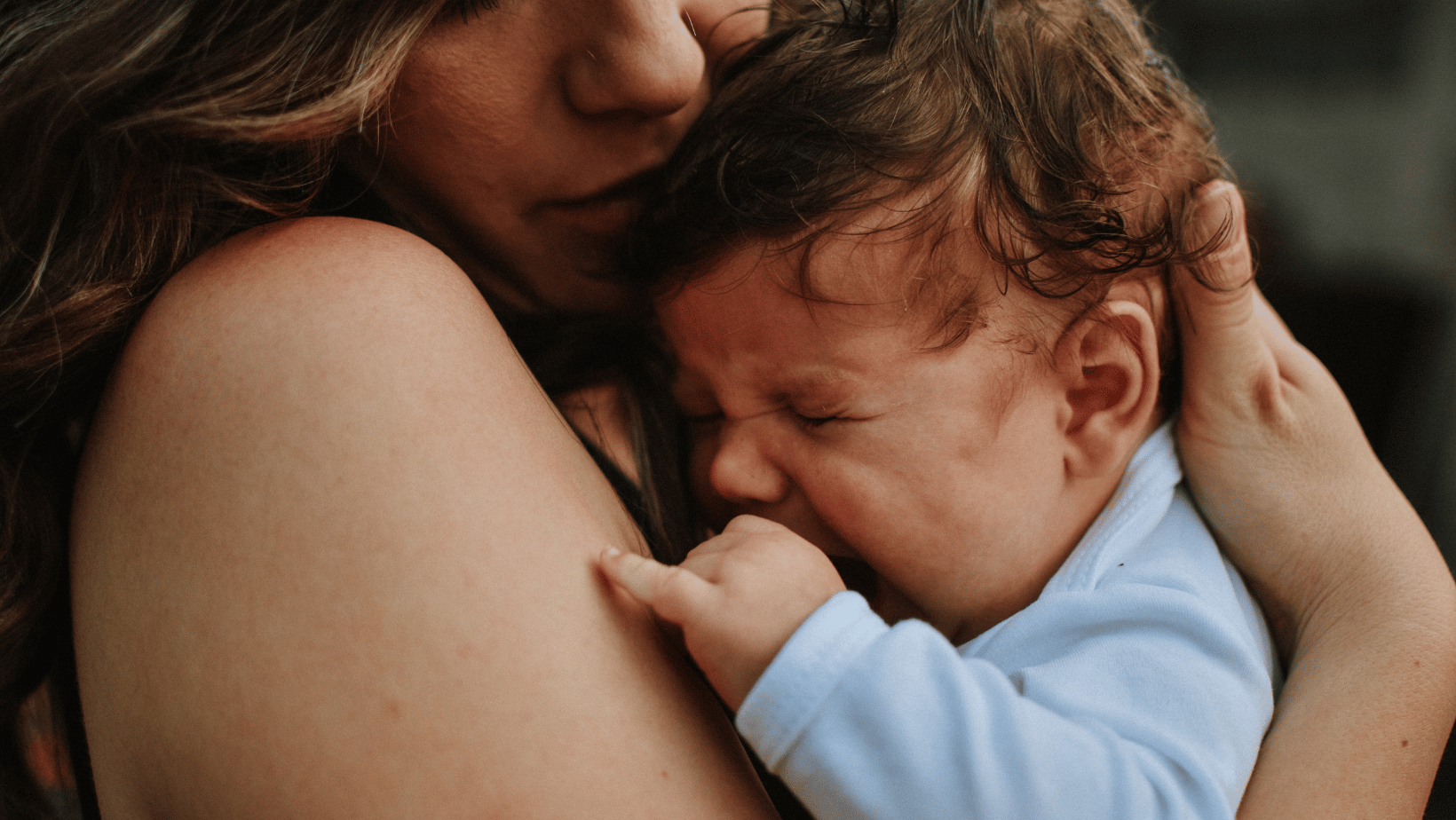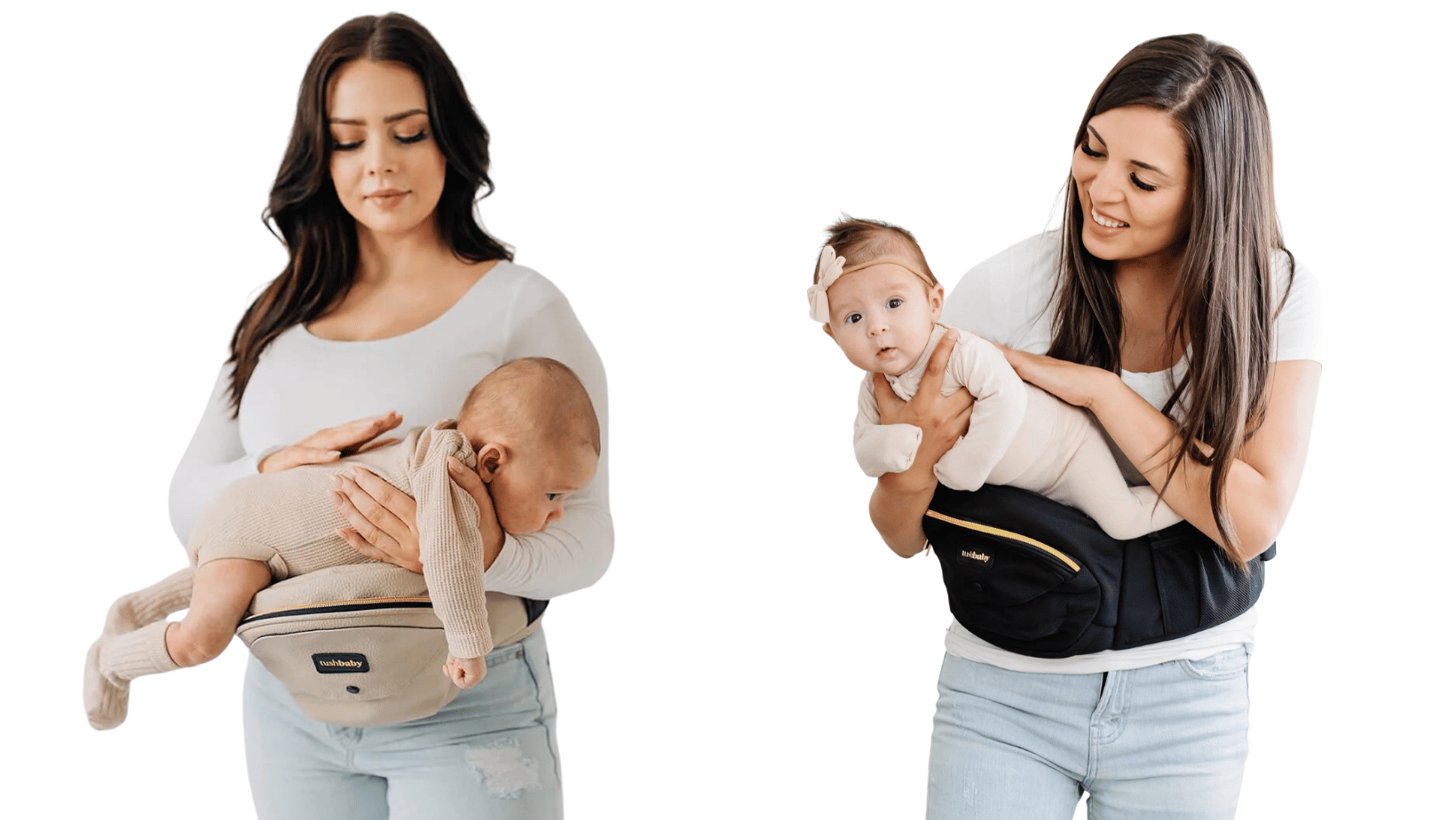How Babywearing Can Help Your Baby with Gas
Babywearing, the practice of carrying your baby in a sling or carrier close to your body, isn't just for convenience—it can be a real lifesaver when your baby is struggling with gas and colic.

Gas can make your baby fussy, and as a parent, you're on a mission to do everything you can to alleviate their discomfort. Babywearing can be a potential game-changer for gassy, colicky babies.

How Babywearing Helps
While you’re wearing your baby and moving around—maybe pacing back and forth, rocking gently, or simply swaying side-to-side—you're inadvertently providing a comforting motion that helps to relieve gas pain.
- Thanks to gravity, there's a natural prevention of gas buildup in your little one's tummy while babywearing because they're not lying flat.
- The upright position also encourages that much-needed burp.
- The gentle squeeze of their belly against your body isn’t just for cuddles (although those are always great). It’s like a little massage that helps usher those gas bubbles on their digestive tract journey.

Breastfeeding Positions that Help with Gas
Babies tend to swallow air during feeding, which can lead to gas. Certain breastfeeding positions, and even bottle feeding positions (paced feeding), can also help reduce the amount of air your little one ingests.
- The Laid-Back breastfeeding position, or Biological Nurturing, is one such helpful posture. It provides full body support and maximum skin-to-skin contact and uses gravity to help your baby latch on properly, reducing swallowed air and gas.
- Then we have the side-lying position, which can be a godsend during night feeds or for mommies recuperating from a C-section. By lying side by side, this position prevents your little one from gulping air, thereby easing gas troubles.
- Now, for older babies who have mastered the art of neck stability, the upright or straddle position is particularly beneficial. Keeping your baby upright in this position helps with a more efficient milk flow and can significantly limit the amount of air intake.
Why We Recommend Tushbaby
- The Tushbaby carrier aids in reducing gas by providing a way for you to carry your baby in an upright position, which supports digestion.
- Burping can provide significant relief for your little one, and Tushbaby can make burping easier. While traditional burping methods — like over the shoulder, sitting up, or face down on your lap — are effective, Tushbaby offers an innovative approach that complements these positions. The Tushbaby hip carrier allows you to place your baby upright or lying down while burping. The Tushbaby colic hold is especially helpful - Hold your baby tummy down on the Tushbaby with their legs on either side of your hips. Support your baby's chin so their airway remains clear. Move up and down gently. Gentle pressure on their stomach potentially helps to move gas bubbles through their system.

- One of the standout features of Tushbaby is its ability to conveniently double as a breastfeeding pillow, offering comfort and support whenever you need to nurse.
- If you've just had a C-section, you know that the road to recovery requires gentleness and care, especially when it comes to lifting and holding your little one. That's where the Tushbaby carrier can be a true ally for you. The carrier is designed to be strapped high and tight around your waist. This is incredibly beneficial for a couple of reasons. Firstly, it allows you to avoid the incision area, which is important as you heal. You're able to give your baby all the cuddles and carry them close without putting pressure on your sensitive abdomen. One nursing position that works particularly well with the Tushbaby after a c-section is the 'football hold,' where your baby lies across your forearm and at your side.

- The motion from your walking and moving rocks those bubbles right out, helping to alleviate gas pains.
- The calming effect of babywearing can help soothe a fussy, gassy, or colicky baby.
Remember, don't hesitate to chat with your pediatrician if you ever have concerns about your baby's gassiness or if it seems excessive. They're there to support you and your baby every step of the way.
Tushbaby Reviews

